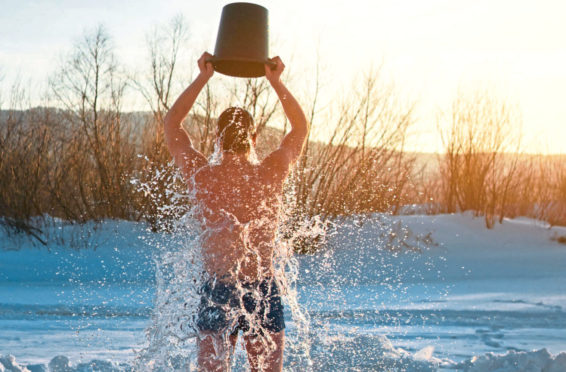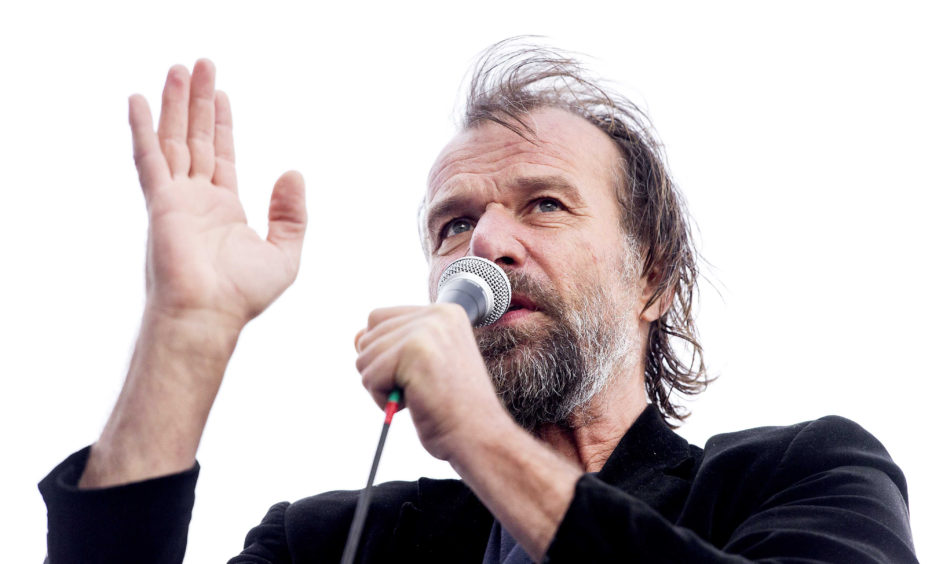
Imagine if the tools you needed to beat stress, sleep better and recover faster weren’t packaged up in an expensive app or pricey health supplement, but were already innately available – all you had to do was learn to unlock the potential of your primitive mind.
According to Dutch extreme athlete Wim Hof, also known as “The Iceman”, we all have scope to tap into these natural human “superpowers”.
It’s easy to see how Hof got his nickname – he’s famous for daredevil acts like climbing Kilimanjaro wearing only shorts and shoes, running a half marathon above the Arctic Circle barefoot, and holding the Guinness World Record for the longest time submerged in an ice bath (one hour, 52 minutes, 42 seconds).
The 61-year-old says he’s able to achieve these extreme feats of survival by using what he’s termed “The Wim Hof Method” – a three-pillar practice that combines meditation, breathing exercises and exposure to cold as a means of controlling the body’s autonomous response systems.
His technique centres on a trio of basic principles, which Hof believes can help you voluntarily activate your sympathetic nervous system (this is part of the autonomic nervous system involved in the body’s “fight or flight” stress response).
1. Cold therapy
One of the perhaps less appealing aspects of the practice involves exposing yourself to icy cold temperatures.
Hof believes this can be done in a variety of ways, like switching to a cold shower in the morning, taking regular ice baths, or safely jumping into cold water at a wild swimming spot, depending on where you live (it’s vital this is only attempted after training, with supervision, never alone and only once you know it’s safe).
2. Breathing
The second pillar is breathing techniques, that draw comparisons to Pranayama (yogic breathing) and Tibetan Tummo “heat” meditation.
There are two stages to the practice: the first involves taking 30-40 rapid “power breaths” where you inhale deeply and exhale quickly.
The second stage involves taking one deep inhalation, a full exhalation and then holding your breath for around 10 seconds, while squeezing all of your muscles (again, it’s best only to attempt after guided training).
3. Commitment
The final pillar is sticking to to the practices.
The Iceman also uses third-eye meditation techniques, where the user visualises a third eye on their forehead, to clear the mind.
“Over time, we as humans have developed a different attitude towards nature and we’ve forgotten about our inner power.
“This is the ability of our body to adapt to extreme temperature and survive within our natural environment,” Hof writes of his philosophy.
“Because we wear clothes and artificially control the temperatures at home and at work, we’ve greatly reduced the natural stimulation of our bodies, atrophying the age-old mechanisms related to our survival and basic function.”
Hof claims practising his method over a sustained period of time can lead to health benefits like more energy, less stress and an improved immune system.
What’s it like to try some Wim Hof at home?
First off, it’s advisable not to try the Wim Hof Method without consulting a doctor.
I’ve been combining cold showers with breathing exercises every morning for two weeks.
The breathing techniques might seem intimidating at first, but they’re surprisingly easy to do by just following along to a YouTube video. I took 10 minutes before starting work to sit and practise every day.
The first time you try the breathing, it’s not unusual to feel a bit light-headed or notice some tingling in your body, although if you’re feeling unwell it’s advisable to stop.
Although bordering on torturous at the time, I found the cold showers were surprisingly a game-changer, and the combination of the two gave me a gentle and natural endorphin buzz.
The biggest positive change I noticed was having more energy in the morning.

Enjoy the convenience of having The Sunday Post delivered as a digital ePaper straight to your smartphone, tablet or computer.
Subscribe for only £5.49 a month and enjoy all the benefits of the printed paper as a digital replica.
Subscribe © Koen Van Weel/EPA/Shutterstock
© Koen Van Weel/EPA/Shutterstock